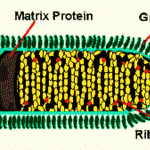 A virus in the rabies family can be used to successfully cure leukemia in lab mice.
A virus in the rabies family can be used to successfully cure leukemia in lab mice.
Disease bad boys like viruses may be the next big step forward in cancer treatment. Researchers from the Ottawa Hospital Research Institute (OHRI) and the University of Ottawa (uOttawa) have developed a virus-based treatment that successfully targets blood cancer cells in the laboratory and in mice.
Viruses are very good at targeting certain cells, and by tailoring a viral treatment to attack cancer cells, researchers found a way to prolong the survival of up to 80 percent of lab mice that received the treatment, with 60 percent effectively cured of leukemia. In comparison, all of the mice with leukemia who did not receive the treatment died.
“What we were really surprised about was how much death we were getting in dish with high enough doses that were safe and effective in a non-spreading agent,” study author David Conrad, M.D., told Healthline.
By using a non-spreading viral agent, specifically non-replicating rhabdovirus-derived particles (NRRPs), it’s possible to create an effective tumor-targeting virus that doesn’t go on to replicate and cause a viral infection. Conrad and his team developed a target-and-strike treatment only, with none of the worrisome after effects of treatments currently used today, including chemotherapy.
“The benefit is it appears to be much safer with less toxic effect [than] normal therapy against the cancer. What standard [chemotherapy] can kill off isn’t always adequate enough,” Conrad said.
The Right Virus for the Job
NRRPs are derived from viruses in the rhabdovirus family, which have been known to affect a large variety of hosts from animals to humans. (Rabies is one of two rhabdoviruses known to affect humans.) By developing a non-spreading form of rhabdovirus, the researchers were able to develop a viral treatment that not only targets cancer cells, but also kills them in a way that elicits a natural immune system response.
“To win the battle over the speed at which the cancer can actually spread, it’s a race. Basically, what you need to do is have enough cancer cells dying for enough immune cells to recognize this kill-off and stimulate the immune response,” Conrad said.
Two types of rhabdoviruses were used—a vesicular stomatitis virus and a wild-type Maraba. By using high-dose UV irradiation, researchers were able to effectively render the viruses harmless.
Currently, a combination of chemotherapy, radiation therapy, and possibly stem cell treatment used to treat leukemia, but the side effects of these treatments can be debilitating. Ideally, NRRPs could be employed to treat leukemia with fewer toxic side effects.
“The next steps are optimizing the schedules and the doses and getting [a clinical trial approved],” Conrad said.
Source: Healthline

















